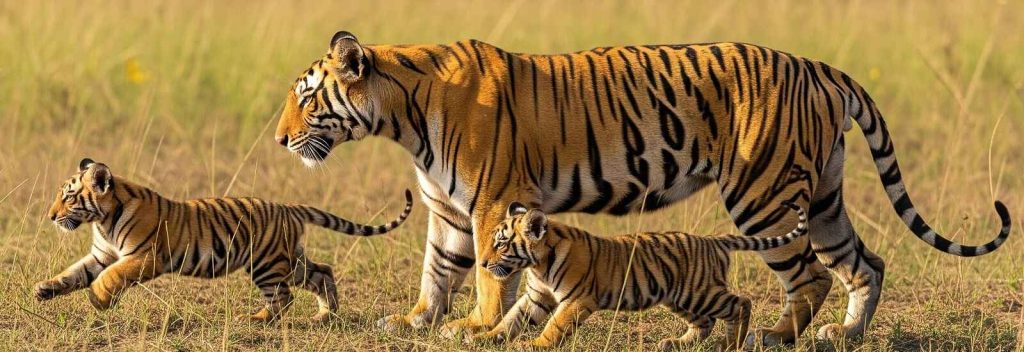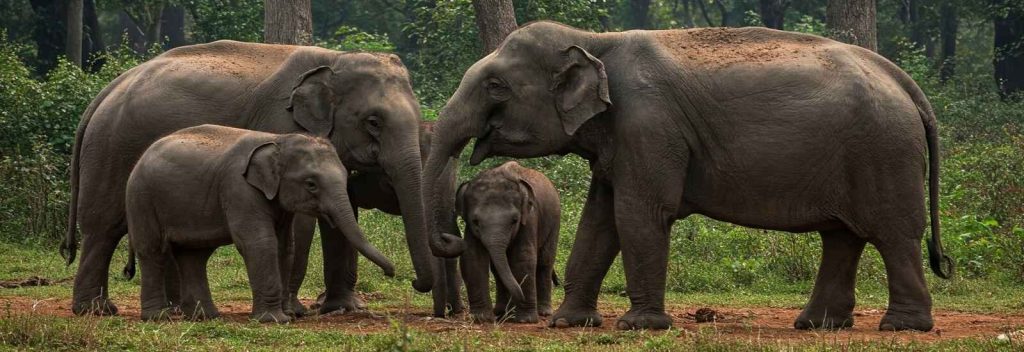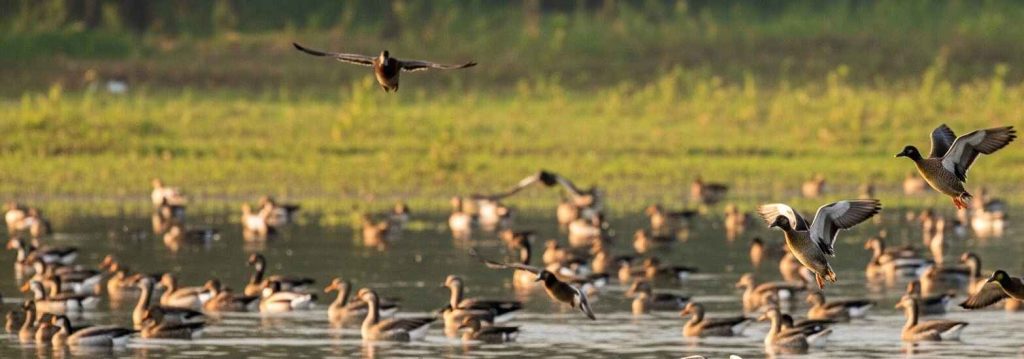The Pilibhit Tiger Reserve is a biodiversity hotspot with a unique combination of grasslands, swamps, and dense forests of sal snuggled in the Terai Arc Landscape of Uttar Pradesh. The very rich ecosystem is home to a number of endangered and rare species, hence making it one of the most prospective places for wildlife in India. If you are a nature lover, an adventure seeker, or a wildlife photographer, you cannot forget the feeling when you watch these giant animals in a jungle safari. So here goes the top 10 wildlife species that you must never miss when you come to Pilibhit Tiger Reserve.
- Royal Bengal Tiger:-
The main feature of Pilibhit Tiger Reserve is the Royal Bengal Tiger, the national animal of India, which is an apex predator of the area. The reserve has demonstrated well in its conservation initiatives through the Project Tiger, with a healthy population being enjoyed in the reserve. The best opportunities to see these elusive cats are during morning or late afternoon safari in a jeep because they have the highest chances to see them when they patrol their areas or hang close to watering holes.
Best Locations to find: Barahi range, Mahof range, Chuka Beach Zone.

- Swamp-Deer (Barasingha):-
Locally called Barahsingha, the animal is the Uttar Pradesh state animal. This beautiful animal can only be seen in a few places, and Pilibhit is one of them. Well known for their unique 12-point antlers, the swamp deer could be commonly spotted in the open grass areas or in and around the lakes, such as the Barahsingha Tal.
Best Spots to see: Barahsingha Tal, Jhand Tal, and the meadows in the canal points.
- Indian Leopard:-
The leopards are light beasts and are skillful predators; they live together with tigers in this terrain. More evasive, they are occasionally seen with their tree-perched posture or crisscrossing in thicker ones. Night tours or even early in the morning visits, when the chances of having an encounter are high.
Best Locations to See: Buffer areas of Pilibhit Tiger forest corridors near Chuka.
- Sloth Bear:-
This nocturnal mammal, the Indian Sloth Bear, is a shy animal that allows the lucky visitor to have a glimpse of it. With their woolly fur and beautiful snouts, they have many habits of feeding on termites, ants, and fruits. They are mostly visible in the summertime after they emerge around water bodies.
Best Locations to look out: Areas that contain thick forests, close to the Mahof or Barahi Ranges.
- Indian Python:-
The Indian Python is one of the non-venomous giants of the Indian forest; one may watch it basking in the sun or lurking amongst the rocks. Pilibhit has its demarcation marks, like Python Point, and it is at this point that these reptiles are sometimes seen. Sightings are not always extensive, and on jungle treks, those can be hard to forget.
Where To Find: Python Point, close to canals and the swampy areas.
- Asian Elephant:-
Though they are not permanent dwellers, Asian Elephants are also regularly migrating in Pilibhit as a part of the Terai Arc corridor on a larger scale. It is a mind-blowing sight to see a herd that walks gracefully within the forest or even taking a bath near a stream.
Best Locations to find: Sapt Sarovar, as well as localities around Sharda Sagar Dam during the migration period.

- Bengal Monitor Lizard:-
These are huge and cold-blooded reptiles usually found in dry forest areas and the open grasslands. A common sight on rocks where it sunbathes, or seen scurrying across forest paths, the Bengal Monitor Lizard is quite a sight to behold with its prehistoric appearance.
Good Locations to Find: At forest watchtowers, termite mounds, and canal sides.
- Otter:-
Smooth-Coated Otter is spotted in waters such as the Otter Point in Pilibhit Tiger Reserve. Playful and social, they are usually seen in groups either diving or swimming, or hunting fish. Their existence shows a good river ecosystem and is especially popular with wildlife photographers.
The Best Likely Places to See Them: Otter Point, Chuka Lake, and Kharja Canal areas.
- Marsh Crocodile (Mugger):-
Along waterbanks or in deep zones, crocodiles can be observed basking or sneaking along in deep waters. The Marsh Crocodile or Mugger has a key role in the preservation of biodiversity in the water body region.
The best places to see them: at Crocodile Point, Chuka Lake, and the Bifurcation Canal stretch.
- Birds of Pilibhit Tiger Reserve Paradise to Birdwatchers:-
Pilibhit, with more than 400+ bird species, is a heaven for bird lovers. The sanctuary is reverberating with the call of birds, starting with the majestic Sarus Crane to the animated Indian Pitta, kingfishers, woodpeckers, eagles, hornbills, and owls.
Better Places to Observe: Birding Point, Jhand Tal, Sapt Sarovar, and in the Sharda canal routes.

Final Thoughts:-
Pilibhit Tiger Reserve is an out-of-the-world experience to see the majestic and rare wildlife in India, just in their natural habitat. All these species add to the ecological diversity of the Terai district. It shows the royal Bengal tiger striding through the sal forests, the serene movement of the Barasingha as they graze on the meadows, the flip of the otter as they dive into a stream; they are all moments to be told as stories.
So as to maximize your wildlife safari: authorized gypsy tours in the book, use trained guides to travel, be kind to animals and avoid littering, obey the laws of the forest department. Then, take your binoculars, cameras, and eco-spirit and enter the Pilibhit tiger reserve jungle core of Uttar Pradesh.


 How To Reach At PTR
How To Reach At PTR